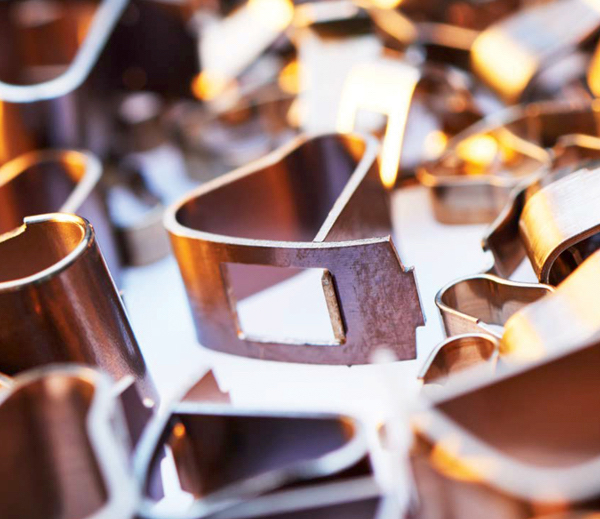Wire Connections Then and Now
Electrical splicing connections have constantly changed over the last 130 years as engineers and manufacturers innovate to ensure safe, secure, and reliable wire and cable connections.
In the early days of wiring, single-sheathed copper wires ran within the walls or ceilings of homes and buildings and were supported by a porcelain knob insulator or flexible cloth sleeve. The wires would be connected by twisting and/or soldering two different wires together. These connections were held together by rubber insulated tape or sometimes kept bare inside of junction boxes. There were many advantages and disadvantages to the knob and tube wiring, which was used until the 1930s and can still be seen in some older buildings today.

Early electrical connection methods are still found in many older buildings. (Image by Laura Scudder per CC BY-SA)
Just ahead of World War II, the cable and wire industry took a huge leap forward with the advent of rubber-fabric-coated wire sheathing, metal conduit, and a new type of wire connector. The rubber fabric allowed both hot and neutral wires to run together, but there was still no ground wire. The metal conduit allowed a grouping of wires to be pulled through a metal tube, which could also double as a grounding method. This conduit could travel through wood and metal framing as well as exposed areas without exposing people to live wires.
The newest connection, the twist-on wire connector, was introduced in the United States around 1933 by electrical contractor William Marr. This connection method, also known as wire nut connectors, was the norm until recently, when companies introduced more reliable connection methods, such as lever or push-in connectors.
Today, flexible metal conduits are still used, although PVC conduits may be more applicable in harsh-environment application areas. In addition, wires are now generally coated with a non-metallic sheathing made primarily of plastic. The connectors used with these wires have changed quite a bit as well. While you still may see a screw connection or twist-on wire connector in a junction box, lever or push-in connectors have become the norm.
Old Connections vs. New Connectors
These older wire-splicing connection methods have not disappeared completely, however, as they still offer advantages. For instance, soldering provides a low-process solution to connect wires. It is also a process that has become automated.
Even though soldering has been around for centuries, it still has drawbacks. The inherent variability of workplace environments, temperature fluctuation, material quality, and user skill can negatively impact the consistency of the process. Some solders are not able to be used in high-temperature situations and the strength of the joints often remains low, even when the joint is additionally held together by adhesives. Soldering by hand is a time-consuming and inexact science and there are hazards associated with using molten metal and lead-based solder. Many countries have mandated a shift to lead-free or composite solder made of lead and tin, which has made some connections weaker.
In order to reduce installation time and make it easier to fit connections into smaller spaces, the twist-on wire connector was born. If you open junction boxes in many homes, you will see a plethora of colorful connectors with multiple wires feeding a number of different electrical applications. When Marr developed the twist-on wire connection, he was looking for a faster and safer way to make electrical connections. As an electrical contractor, he had suffered injuries from molten solder and was looking for a low-risk way to connect wires. Eventually, he developed a connection in which the wires were twisted together with a screw. This would ultimately lead to a connector that you could twist together with your fingers. The wires were initially encapsulated in ceramic and later in plastic.

Twist-on wire-nut connectors
Twist-on wire connectors saved installation time, required less operational space, and reduced costs. However, with advantages came disadvantages. Most twist-on wire connections are largely dependent upon installer skill and, as such, remain inconsistently reliable. They can also fail when exposed to vibration, stress, temperature fluctuation, or corrosion. The color-coding of the caps, the number needed, and the wire gauge that should be used with each can be confusing and potentially hazardous as well. Like all older connections, you must mate the correct wires together with the appropriately sized cap in order to form a proper connection.
Terminal blocks were later developed to provide installers with modular, insulated blocks to secure multiple wires together. Terminal blocks secure wires within individual terminals, often arranged in a grouping, and connect to a ground or switches and outlets. Terminal blocks are becoming more common in residential wiring but have been the norm in the industrial sector for quite some time. Today, this technology has expanded to include push-in and lever-actuated connectors that completely eliminate the need for installation tools and automatically ensure strong electrical connections.

WAGO’s CAGE CLAMP connection technology, invented in 1977, has become the industrial standard for electrical interconnection technologies. Spring-pressure technology provides shorter wiring times, faster commissioning, maintenance-free connections, and high reliability even in harsh conditions.
In the Field
While many residential installers still use twist-on wire caps for electrical connections, the industrial world has taken the next step. Zero Zone, a company that makes coolers, freezers, and refrigeration systems for commercial retailers, transitioned from twist-on wire caps and screw-type terminal blocks to WAGO’s 222 Series Push-in CAGE CLAMP connectors with lever actuation in an effort to provide safer, more effective, cost-saving connections. “The spring CAGE CLAMP connectors provided high visibility, and safer, tighter connections than twist caps,” said Zero Zone’s senior electrical engineer Matthew Planning. “It’s a repeatable connector that makes it the king, and I believe it’s still underappreciated.”
After years of working with the 222 Series, Zero Zone upgraded to the new 221 Series LEVER NUTS splicing connectors. These provided the company with connectors that were rated across the entire temperature spectrum, which is key when working with extremely cold or hot temperatures. Planning says it was just a matter of product discovery that initiated the change. “We could still use twist-on wire caps, but LEVER NUTS are so much faster and easily more repeatable.”

WAGO’s 221 Series LEVER NUT splicing connectors
The 221 Series is also approved to ATEX and IECEx (Ex) standards for high-volatility environments, including oil and gas applications. The ATEX certification is required in the EU for all electrical installations in hazardous environments, while the technically identical IECX rating is accepted globally, so most companies certify their products to both standards. Connectors that carry these ratings provide robust protection against sparks or explosions and can be used in junction boxes, lighting systems, terminal boxes, and electronic devices used in potentially explosive applications and environments. Gray color-coding is typically used to indicate this additional level of protection.
What the Future Holds
There is no telling what type of innovations the future holds for wire connectivity. Connector designers continue to make connections faster, stronger, more durable, and ruggedized against harsh elements. The old methods of splicing may never entirely go away, but connector manufacturers will continue to evolve and come up with new and exciting products.
Like this article? Check out our other Connector Basics and materials articles, our Wire and Cable Assembly and Industrial Market Pages, and our 2020 and 2019 Article Archives.
- Harsh Environments No Longer Derail Reliability of Railroad Crossings - October 11, 2022
- Wire Connections Then and Now - March 31, 2020





